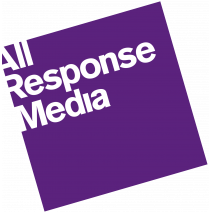Influencer marketing is described by Wikipedia as: “A form of marketing in which focus is placed on influential people, rather than the target market as a whole. It identifies the individuals that have influence over potential buyers, and orients marketing activities around these influencers.”
Identify someone who can influence your customers’ purchase decision and get them to talk about your brand. It’s one of the oldest PR strategies. Though it has been around for a long time, the social networks have increased its popularity significantly. This is the growth chart for the search term “influencer marketing” over the last 5 years:
Now, social media celebrities can provide detailed breakdowns of their audiences using the analytics packages provided by the different platforms. The key to conducting a successful influencer marketing campaign is to identify an influencer through their content output via their social profile and pay them to post about your content, product or service.
Social influencers are misunderstood
What people don’t understand is what an influencer can be: bloggers, YouTubers, social media celebrities and journalists as well are all part of the same spectrum. You can find them at the right level for your brand.
But don’t be fooled by the number of followers, it’s about them having an engaged following, whether the engagement comes from watch time on YouTube or likes and comments on Instagram or Facebook. A comments section on a blog can be a great place to get an idea of an influencer’s engagement levels.
Influencer marketing as a direct response medium
The biggest challenge with influencer marketing is seeing results. Influencers have been treated as part of branding, which means their connection to sale has been loose. That said there are an abundance of elements to influencer marketing which provide the foundations for a response-based approach. It is focused on the trust developed by that influencer and their respective followers and can provide greater granularity than other forms of advertising. It can also be as cost-effective and scalable if you get a good post.
Non-celebrity, relatable influencers build closer, more trustful relationships with their audiences. People actively follow these people and watch daily for their updates, meaning it isn’t an interruptive medium; it’s an active choice to follow and engage. If you can find the influencer with high engagement levels, their audience is more often going to like your brand…
This is where a direct response agency can really assist. We build content funnels by developing audiences with influencers and cross-promoting to them. This does not mean rushing them to purchase. The second stage can be a content piece that leads people closer to purchase, a “ten reasons to buy”. This means we can actively control the user’s path to purchase: from engaging with entertainment-led content on a social platform, we can serve the same individual review and benefit content, then follow this with an offer to buy.
Therefore, with the right set up, efficient responses can be achieved via influencer marketing, and if you would like to learn more about how this relates to your business please do feel free to ask your All Response Media team.

